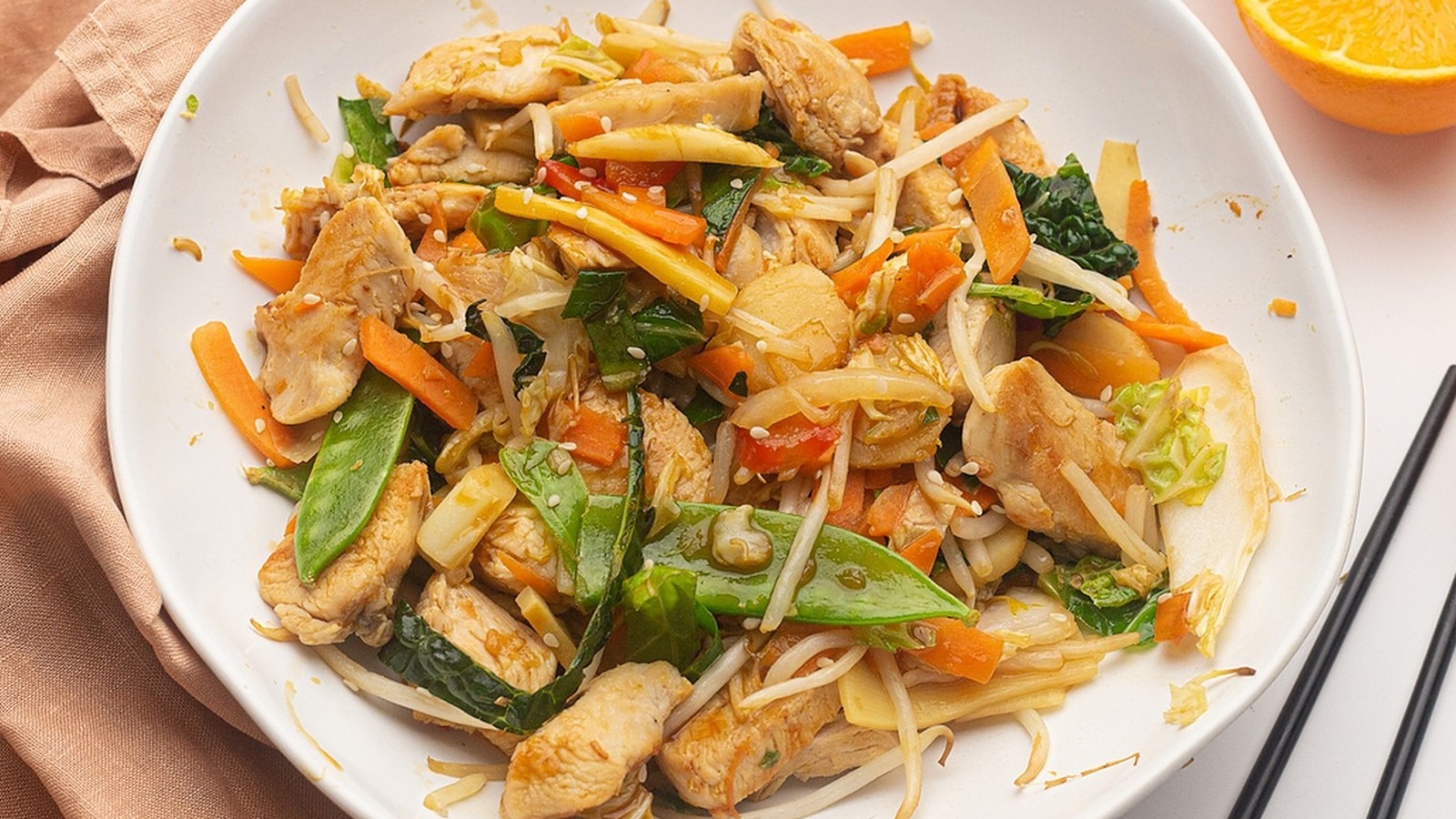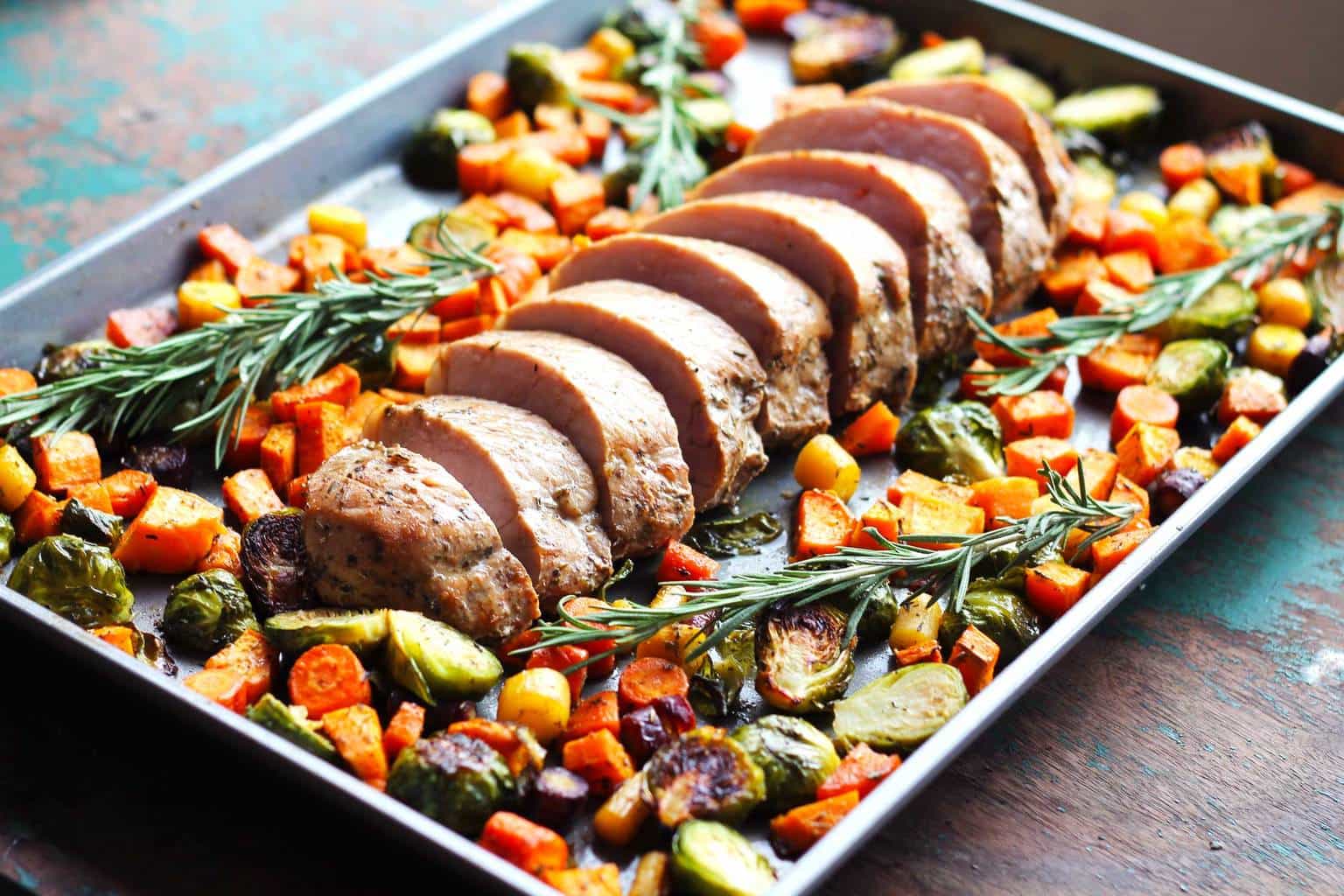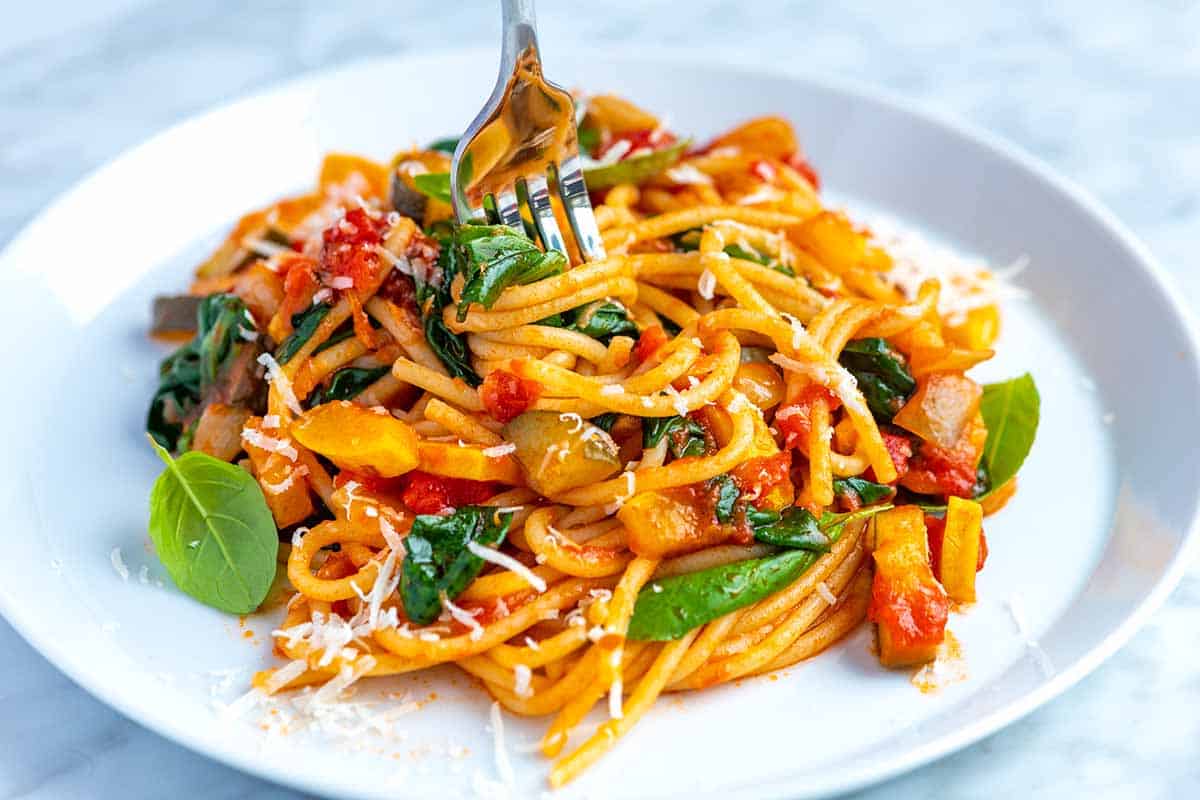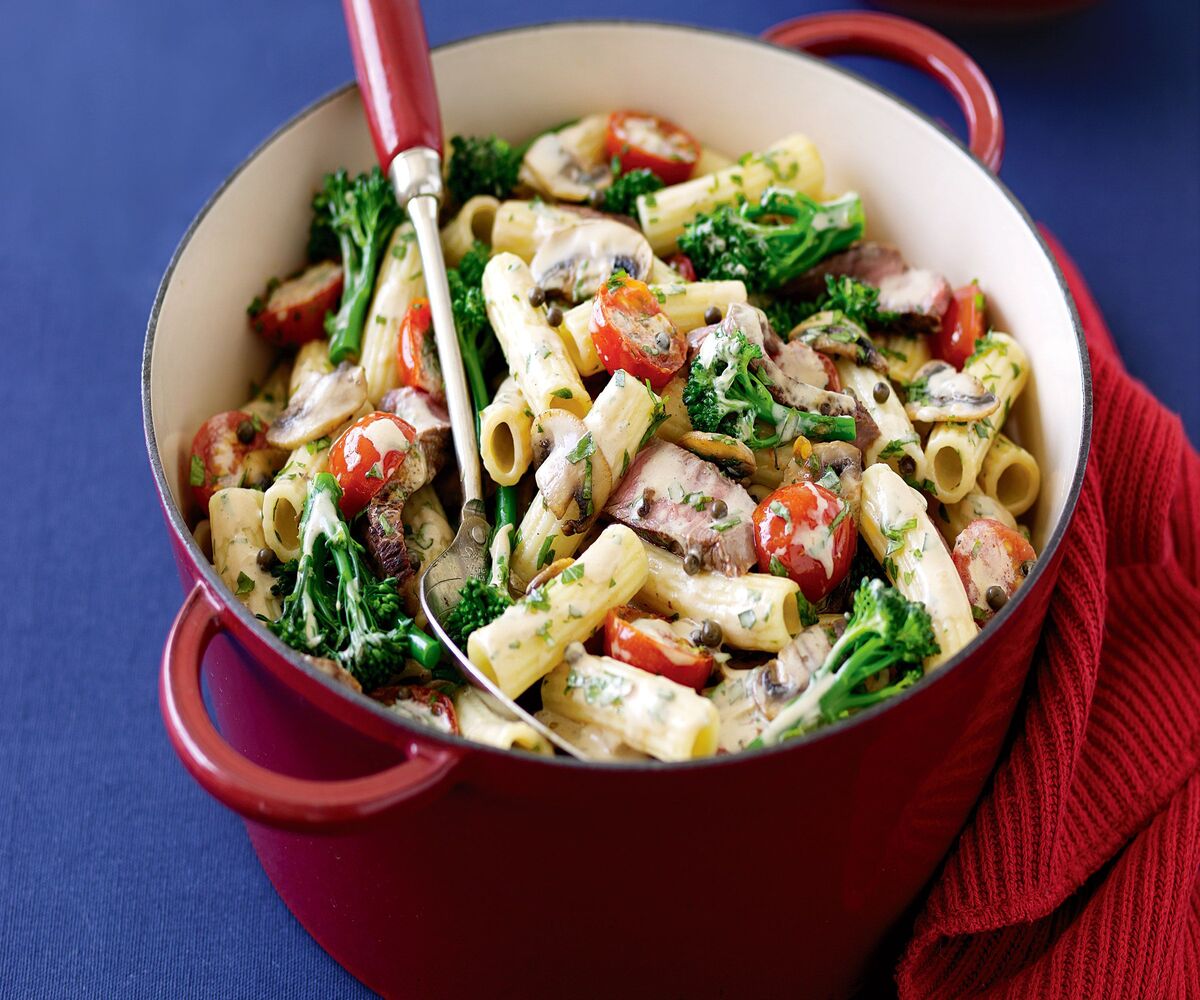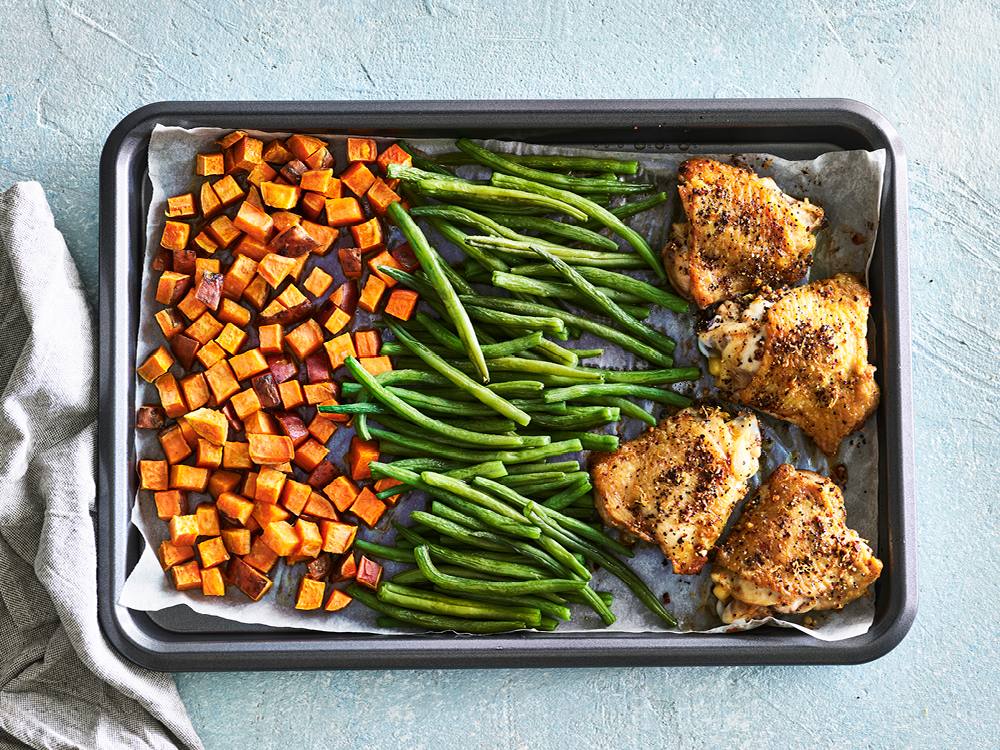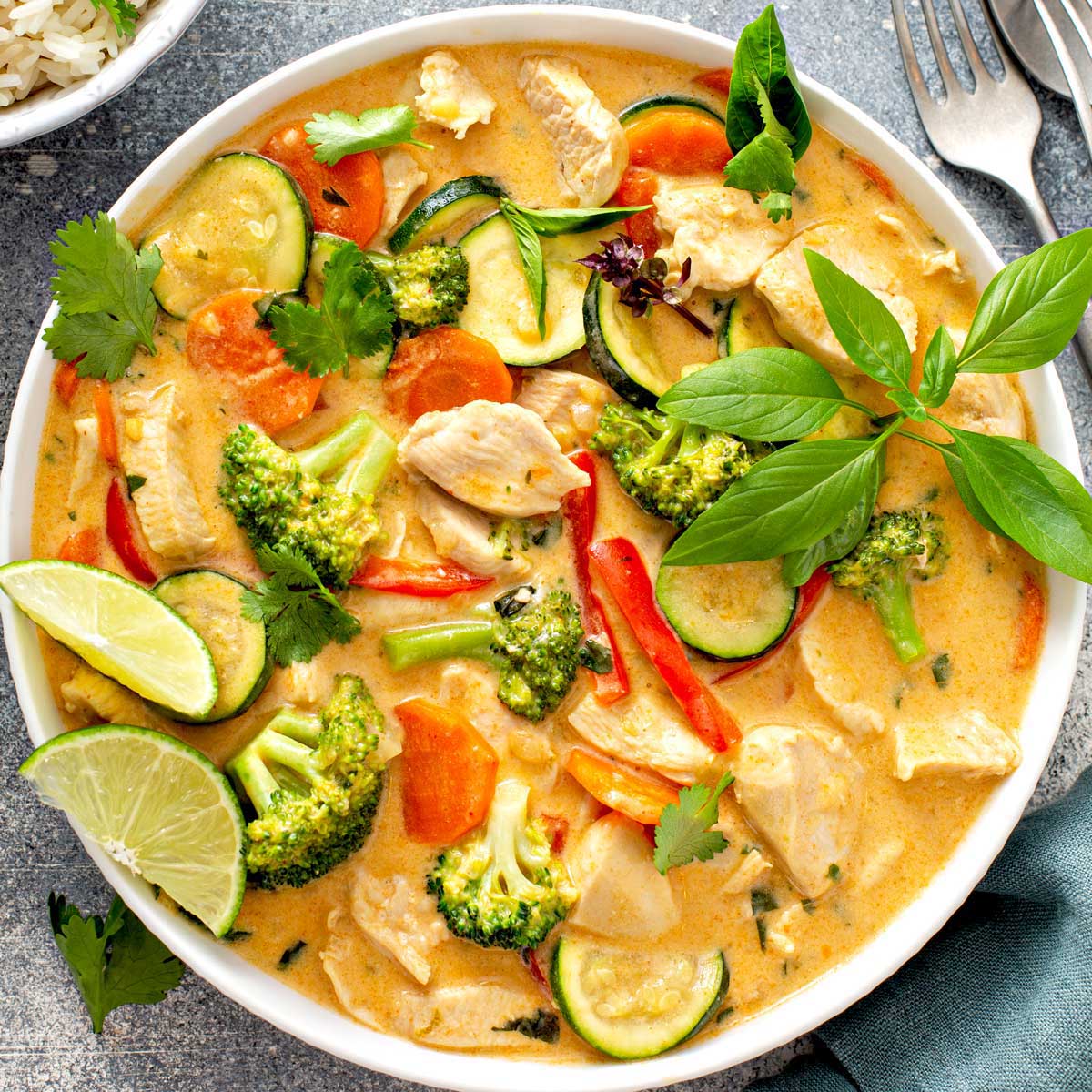Home>Gardening News and Trends>Latest News>What Vegetables Go In Pad Thai


Latest News
What Vegetables Go In Pad Thai
Published: October 8, 2023
Looking for the latest news on what vegetables go in Pad Thai? Discover the best selection to create the perfect dish and satisfy your taste buds.
(Many of the links in this article redirect to a specific reviewed product. Your purchase of these products through affiliate links helps to generate commission for Chicagolandgardening.com, at no extra cost. Learn more)
Table of Contents
Introduction
Pad Thai is a popular and beloved Thai dish known for its delicate balance of sweet, sour, and savory flavors. It typically consists of stir-fried noodles, protein, eggs, and an array of vegetables, all seasoned with a tangy tamarind-based sauce and garnished with peanuts and fresh herbs.
The versatility of Pad Thai lies in its ability to accommodate various dietary preferences and restrictions. For vegetarians and vegans, the dish can be made entirely plant-based by omitting the protein and focusing on vibrant and flavorful vegetables. Whether you’re following a vegetarian lifestyle or simply looking to add more vegetables to your Pad Thai, there are plenty of options to choose from.
In this article, we will explore the traditional ingredients in Pad Thai, discuss the vegetable options commonly used in this dish, and suggest alternative vegetable substitutes. Additionally, we’ll provide tips on how to choose and prepare vegetables to ensure they complement and enhance the overall flavor and texture of your Pad Thai.
Whether you’re a seasoned Pad Thai connoisseur or a curious food lover looking to experiment with new flavors, this article will guide you in selecting the best vegetables to create a delicious and satisfying Pad Thai experience.
Traditional Pad Thai Ingredients
Before we dive into the vegetable options for Pad Thai, let’s first explore the traditional ingredients that make up this iconic dish. While there may be variations depending on personal preference and regional influences, the core components of a traditional Pad Thai remain fairly consistent.
1. Noodles: Pad Thai is typically made with thin, flat rice noodles, also known as rice sticks. These noodles have a chewy texture that absorbs the flavors of the dish.
2. Protein: Common protein sources in Pad Thai include shrimp, chicken, pork, or tofu. These proteins add a satisfying element to the dish and can be customized to suit different dietary preferences.
3. Eggs: Eggs are an essential component of Pad Thai, adding richness and a creamy texture. They are typically scrambled and mixed with the noodles and other ingredients.
4. Sauce: The sauce is what gives Pad Thai its distinct flavor. It is a combination of tangy, sweet, and savory ingredients, with the key component being tamarind paste or tamarind concentrate. Other ingredients in the sauce may include fish sauce, sugar, lime juice, and chili for heat.
5. Garnishes: Pad Thai is commonly garnished with a variety of toppings to add texture and freshness. The most common garnishes include crushed peanuts, fresh lime wedges, bean sprouts, and cilantro.
Now that we have a solid understanding of the traditional elements in Pad Thai, let’s explore the vegetable options that can be incorporated into this delicious dish to elevate its nutritional value and add a vibrant touch.
Vegetable Options for Pad Thai
When it comes to adding vegetables to Pad Thai, the possibilities are endless. Vegetables not only provide nutrition but also contribute to the overall taste, color, and texture of the dish. They add freshness, crunch, and a burst of flavor that complements the other ingredients.
Here are some popular vegetable options to consider when preparing your Pad Thai:
- Bean Sprouts: These crunchy and refreshing sprouts are a staple in Pad Thai. They add a delightful texture and freshness to the dish.
- Carrots: Julienne or thinly sliced carrots can add a subtle sweetness and vibrant color to your Pad Thai.
- Bell Peppers: For a pop of color and a slight crunch, include sliced or diced bell peppers in your Pad Thai. The different colors of bell peppers (red, yellow, and green) not only make the dish visually appealing but also provide a range of flavors.
- Cabbage: Shredded cabbage can offer a pleasant crunch and a mild sweetness to the dish. It also adds a beautiful texture and volume without overpowering other flavors.
- Green Onions: Chopped green onions can add a mild onion flavor and a touch of freshness to your Pad Thai. They are often used both as an ingredient in the stir-fry and as a garnish.
- Bean Sprouts: These crunchy and refreshing sprouts are a staple in Pad Thai. They add a delightful texture and freshness to the dish.
Of course, these are just a few suggestions, and you can get creative with your vegetable choices. Feel free to experiment with other vegetables like broccoli, snow peas, mushrooms, or even leafy greens like spinach or kale. The key is to choose vegetables that will complement the flavors of the dish and provide a pleasing combination of textures.
Now that we’ve discussed some common vegetable options, let’s explore specific vegetables that are commonly used in Pad Thai.
Common Vegetables Used in Pad Thai
When it comes to Pad Thai, certain vegetables are more commonly used due to their ability to enhance the flavors and textures of the dish. These vegetables are readily available and often found in traditional Pad Thai recipes. Here are some of the most commonly used vegetables:
- Bean Sprouts: Bean sprouts are a staple ingredient in Pad Thai. They add a refreshing crunch and a subtle sweetness. Look for fresh bean sprouts with firm, white tails for the best quality and texture.
- Cilantro: Cilantro adds a fresh and herbaceous flavor to Pad Thai. The leaves are commonly used as a garnish to give a burst of freshness to the finished dish.
- Green Onions: Also known as scallions, green onions are used in both the stir-fry and as a garnish. Their mild onion flavor adds a subtle kick, while the green tops provide a vibrant color to the dish.
- Carrots: Carrots are often thinly sliced or julienned and added to Pad Thai. They contribute a touch of sweetness and a vibrant orange color.
- Bell Peppers: Bell peppers provide a satisfying crunch and a burst of colors to Pad Thai. They are usually sliced or diced and add a slightly sweet and tangy flavor to the dish.
- Cabbage: Shredded cabbage is another common vegetable in Pad Thai. It adds a delightful crunch and a hint of natural sweetness to the dish. The cabbage pieces absorb the flavors of the sauce, making each bite more flavorful.
These vegetables not only contribute to the overall taste and texture of Pad Thai but also add a vibrant and visually appealing element to the dish. However, feel free to experiment with different vegetables based on your personal preference and availability. The goal is to create a delicious and satisfying Pad Thai experience that suits your taste.
Now that we’ve explored the common vegetables used in Pad Thai, let’s take a look at some vegetable substitutes that you can use if you’re looking to switch things up or accommodate dietary restrictions.
Other Vegetable Substitutes
If you’re looking to change things up or have specific dietary restrictions, there are plenty of alternative vegetable options that you can use in Pad Thai. These substitutes offer different flavors and textures while still maintaining the essence of the dish. Here are some vegetable substitutes to consider:
- Zucchini Noodles: For a low-carb or gluten-free option, replace traditional rice noodles with zucchini noodles, also known as zoodles. These spiralized zucchini strands provide a light and refreshing twist to the dish.
- Shredded Brussels Sprouts: If you’re a fan of Brussels sprouts, shred them finely and use them as a substitute for cabbage in Pad Thai. They add a slightly nutty flavor and a unique texture to the dish.
- Kohlrabi: Kohlrabi is a versatile vegetable that can be sliced or julienned and used as a substitute for carrots in Pad Thai. It offers a slightly sweet and crisp texture that complements the other flavors in the dish.
- Broccoli Florets: Adding broccoli florets to Pad Thai not only adds a vibrant green color but also provides a crisp texture and a mild earthy flavor. Steam or blanch the broccoli briefly before stir-frying to maintain its vibrant color and crunch.
- Spinach: Spinach is a versatile leafy green that can be added to Pad Thai for a boost of nutrition. It wilts quickly and blends well with the other ingredients, adding a subtle earthy taste and vibrant green color.
- Mung Bean Sprouts: If you’re looking for a different kind of bean sprout, try using mung bean sprouts instead of the traditional bean sprouts. They have a slightly different texture and taste, giving your Pad Thai a unique twist.
These alternative vegetable substitutes can bring new flavors and textures to your Pad Thai, allowing you to customize the dish according to your preferences or dietary needs. Feel free to mix and match different vegetables or even try out your own creative substitutions.
Now that we’ve explored the vegetable options for Pad Thai, let’s move on to some tips for choosing and preparing vegetables to ensure they enhance the overall flavor and texture of the dish.
Tips for Choosing and Preparing Vegetables for Pad Thai
Choosing the right vegetables and preparing them properly is key to creating a delicious Pad Thai dish. Here are some tips to help you select and prepare vegetables that will enhance the flavor and texture of your Pad Thai:
- Freshness Matters: Always choose fresh vegetables for the best taste and texture. Look for vegetables that are firm, vibrant in color, and free from any signs of wilting or decay.
- Texture and Crunch: Consider the texture of the vegetables you choose. Pad Thai benefits from a variety of textures, so include a mix of vegetables that offer crunch, such as bean sprouts and bell peppers, as well as softer ingredients like cabbage or spinach.
- Preparation Techniques: Cut or slice the vegetables into uniform sizes to ensure even cooking. Thinly sliced or julienned vegetables work best in Pad Thai, as they blend well with the other ingredients.
- Timing: Add the vegetables to the Pad Thai stir-fry in a timely manner to ensure they are cooked but still retain some crispness. Overcooking can result in mushy vegetables and diminished flavors.
- Garnishing and Freshness: Reserve some fresh herbs and garnishes such as cilantro and green onions to sprinkle on top of the finished Pad Thai. This adds a burst of fresh flavors and an appealing visual element to the dish.
- Experiment and Customize: Don’t be afraid to experiment and customize your Pad Thai with different vegetable combinations. Feel free to mix and match vegetables to suit your taste preferences or to accommodate dietary restrictions.
Remember, Pad Thai is a versatile dish that allows you to get creative and create a personalized version that suits your preferences. The key is to choose fresh vegetables, prepare them appropriately, and add them to the stir-fry at the right time to maintain their texture and flavor.
Now armed with these tips, you’re ready to create a flavorful and satisfying Pad Thai by selecting and preparing the perfect vegetables to enhance this iconic Thai dish.
Conclusion
Pad Thai is a delicious and versatile dish that can be customized to suit various dietary preferences and restrictions. By incorporating a variety of vegetables, you can not only enhance the nutritional value of Pad Thai but also add vibrant colors, refreshing textures, and unique flavors.
In this article, we have explored the traditional ingredients in Pad Thai, including the essential noodles, protein options, eggs, sauce, and garnishes. We then delved into the vegetable options commonly used in Pad Thai, such as bean sprouts, carrots, bell peppers, cabbage, green onions, and more.
Furthermore, we discussed alternative vegetable substitutes, such as zucchini noodles, shredded Brussels sprouts, kohlrabi, broccoli florets, spinach, and mung bean sprouts. These alternatives offer exciting variations while maintaining the essence of Pad Thai.
We also provided valuable tips for choosing and preparing vegetables for Pad Thai, including the importance of freshness, texture, timing, and garnishing. These tips ensure that your vegetables contribute to the overall flavor and texture of the dish, enhancing your Pad Thai experience.
Whether you’re a vegetarian or simply looking to incorporate more vegetables into your diet, Pad Thai offers a fantastic platform for creative culinary exploration. Don’t be afraid to experiment with different vegetables, combinations, and techniques to create your own signature Pad Thai.
So, the next time you’re craving a flavorful and satisfying dish, venture into your kitchen, gather your favorite vegetables, and embark on a culinary adventure to create a personalized and delightful Pad Thai experience. Enjoy!



